November 14, 2023 Did You Know?
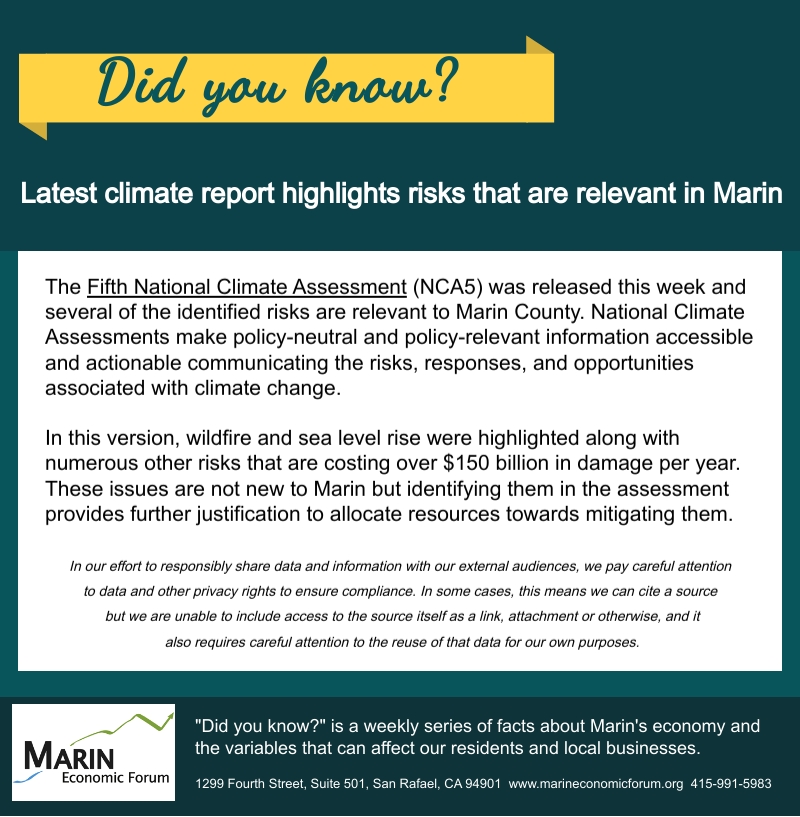
Be the first to receive updates and news from MEF by subscribing or liking us on our social media pages: Facebook, Twitter, and LinkedIn!

Be the first to receive updates and news from MEF by subscribing or liking us on our social media pages: Facebook, Twitter, and LinkedIn!
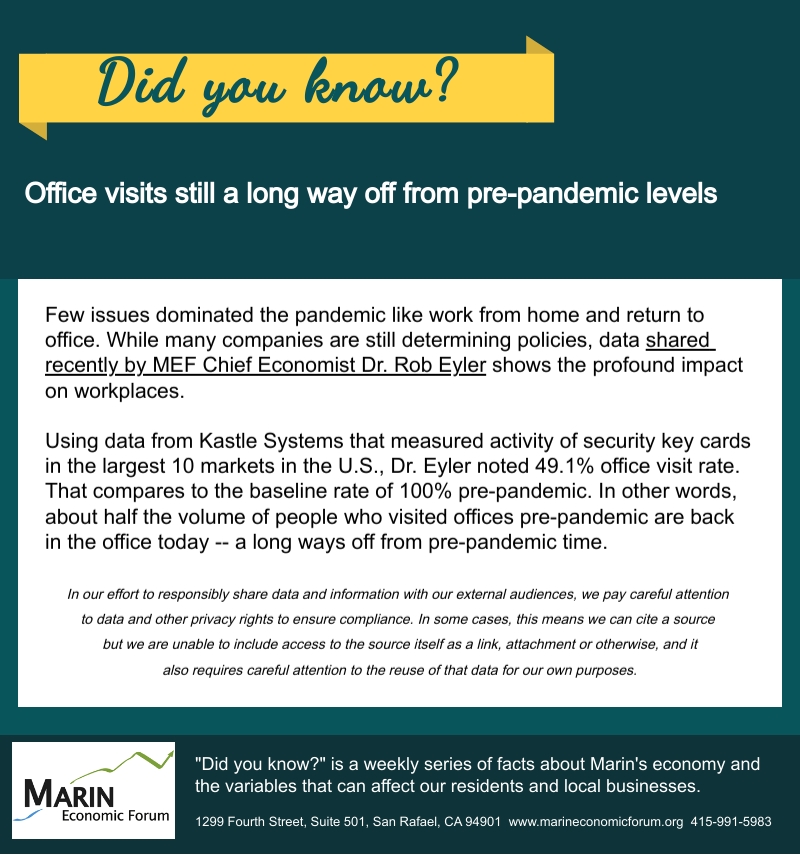
Be the first to receive updates and news from MEF by subscribing or liking us on our social media pages: Facebook, Twitter, and LinkedIn!

Be the first to receive updates and news from MEF by subscribing or liking us on our social media pages: Facebook, Twitter, and LinkedIn!
October 2023
| The Pt. Reyes Light recently published an article about West Marin restaurants need to cut hours of operation due to lack of staff, whether it be a part-time barista or a highly skilled, well-paid chef. The situation is doubly frustrating for these restaurants as tourism activity is surpassing pre-pandemic levels. One of the reasons for their struggle is a small labor force in West Marin due in part to a shortage of affordable housing. Yet the housing issue has persisted for a long time, and it will take a long time to resolve. Without a strategy to expand the local labor force or entice non-locals to commute, the business sector in West Marin could shrink. That would leave precious tax revenues for public services also shrinking. In a way, what is happening in West Marin is a microcosm for all of Marin. Since the pandemic, the Marin labor force has remained about 5% smaller, with retirements, out-migration and population decline all playing some part. In some cases, raising wages or paying sign-on bonuses may help temporarily, but broader labor force challenges need to be addressed through a comprehensive and collaborative approach led by government, employers and the business community, education providers, and workforce development officials. There are some examples of how this is occurring. The Committee for Economic Development (a national group), has been promoting a set of recommendations for employers and policymakers to address the labor shortage, largely by engaging prospective employees from groups that may have been overlooked in the past, including older adults, formerly incarcerated individuals, recent high school graduates, and people with disabilities. Their recommendations largely put the burden on employers, but the public sector can help with incentives as can philanthropy and the non-profit sector. The labor shortage is heavily felt in the construction industry, which has experienced high demand and job openings since the economic recovery of the pandemic. A new federally funded program between the Department of Labor and the National League of Cities aims to address the shortage of over 1 million construction workers by identifying and training workers for the industry, with an emphasis on women and youth. The program will start in 12 cities across the U.S. as a pilot, with a goal to add more. Locally, a great model of collaboration is the Marin Builders Association North Bay Construction Corps., which provides high school students the training to secure a job in the construction trades immediately after graduating. This program creates a pipeline of talent while offering individuals good quality jobs. Another program that provides training on auto repair and other skilled occupations is underway at Terra Linda High School, supported by the Marin County Office of Education and the Charlie and Barbara Goodman Foundation. College of Marin regularly partners with private employers to do customized training, albeit in small volumes but scalable. These programs are good examples of how public-private collaboration can meet demand. Marin’s challenge is to take these successful models and replicate them across the county, while also focusing equally on sectors like IT and life sciences that have middle and high-wage occupations. One of the places to start would be in West Marin. In our effort to responsibly share data and information with our external audiences, we pay careful attention to data and other privacy rights to ensure compliance. In some cases, this means we can cite a source but we are unable to include access to the source itself as a link, attachment or otherwise, and it also requires careful attention to the reuse of that data for our own purposes. |
Mike Blakeley, CEO
Marin Economic Forum
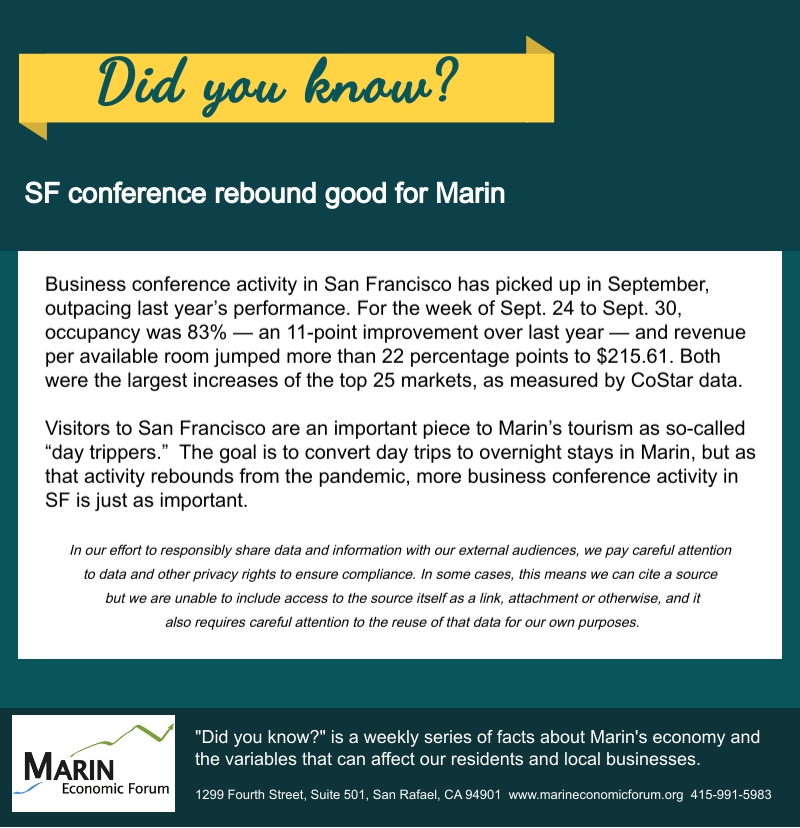
Be the first to receive updates and news from MEF by subscribing or liking us on our social media pages: Facebook, Twitter, and LinkedIn!
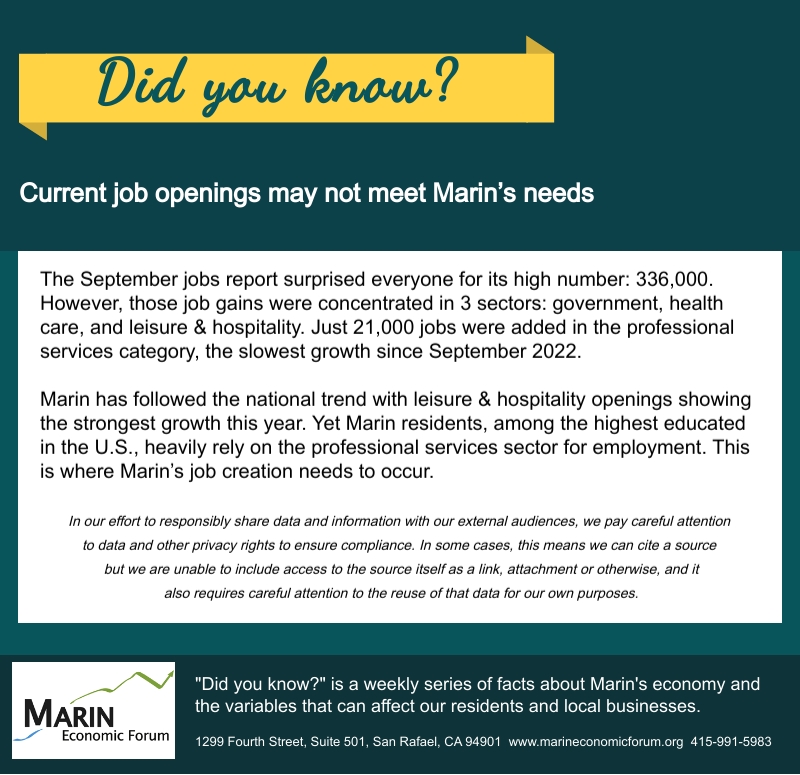
Be the first to receive updates and news from MEF by subscribing or liking us on our social media pages: Facebook, Twitter, and LinkedIn!
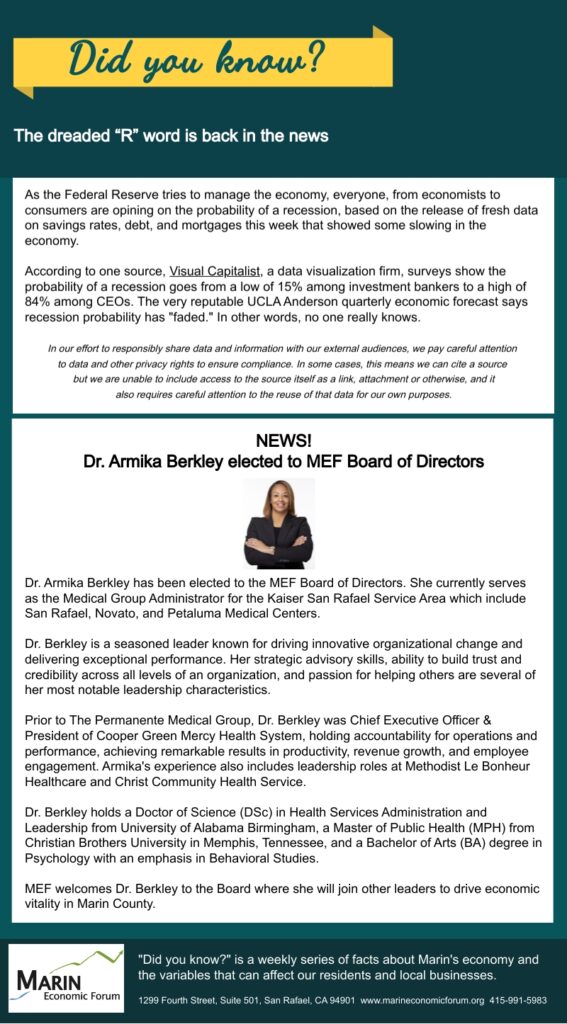
Be the first to receive updates and news from MEF by subscribing or liking us on our social media pages: Facebook, Twitter, and LinkedIn!
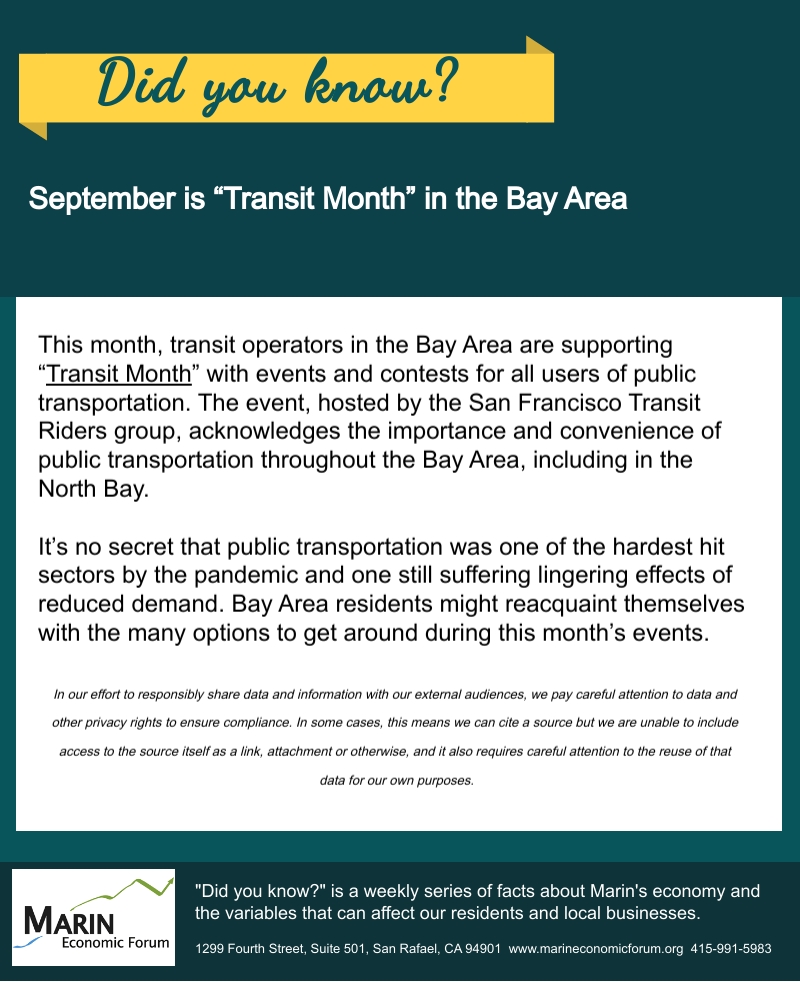
Be the first to receive updates and news from MEF by subscribing or liking us on our social media pages: Facebook, Twitter, and LinkedIn!
September 2023
| Recent articles on the U.S. economy (including those from the Marin Economic Forum) have discussed the growing concern over a labor shortage that has persisted since the pandemic. Marin’s own labor force is down over 5% (about 6,500 workers), a figure that has remained since 2020. The Bureau of Labor Statistics reports there were over 8.8 million jobs open in August 2023 across the U.S. and anyone who has strolled one of Marin’s downtowns has noticed a “We’re Hiring!” sign in windows. it seems to be a problem that won’t go away, and here is why that is a concern for the Marin economy: Stifled Economic Growth: A prolonged labor shortage hinders economic growth by restricting the potential output of businesses. Economic growth in Marin is not about new buildings and more traffic – – it is about having a tax base of personal and business incomes that fund critical public services. The alternative to economic growth is higher costs or taxes to offset losses of traditional revenue sources. That would be even harder on our low-income residents. Inflationary Pressure: The labor shortage can lead to wage inflation as employers compete for a limited pool of talent. While an argument for higher wages in the costly Bay Area can be made, many of our small, locally serving businesses are price sensitive, meaning they cannot absorb higher costs without passing on to their customers or limiting operations. This is already occurring in local food and energy sectors as well as some basic healthcare services like the dentist. Skill Mismatch: As the labor market tightens, employers may struggle to find workers with the specific skills they need. This can lead to a skills gap, where available jobs and the skills of the workforce do not align. In Marin, we have many high-skilled residents that must seek employment elsewhere and a lot of demand for lower skilled jobs, which we cannot fill with the existing labor force. High skilled occupations in the trades sector do not have sufficient talent pipelines to meet demand, at a time where cities have pledged to build more homes. All three issues are pain points for Marin residents, whether they be business owners or employees. But solving these issues is difficult because Marin has unique challenges that exacerbate our own labor shortage issue, especially our high cost of living. These unique challenges do not allow us to take the most traditional approaches to labor shortages such as: Investing in Training: Regions that successfully combat labor shortages invest in training programs that align with the needs of local industries. However, in Marin our largest industry sectors are those with locally serving businesses, like foodservice, real estate, and retail sales, which are not attractive investments for training entities given the relatively lower wages paid. That makes it difficult to build talent pipelines to feed those industries. Attract and Retain Talent: Regions compete for talent by creating vibrant and livable communities and having a robust ecosystem of employers. Marin’s quality of life is a major draw to live or work here, but we do not possess those deep pools of firms that can motivate a young professional to locate here. With just a few companies in sectors like life science or technology, it can be a risk for an employee to relocate to Marin without multiple employer options. Immigration: Labor shortages can be mitigated by providing a legal pathway for skilled immigrants to work in the U.S. For example, Silicon Valley has benefited from a diverse and highly skilled immigrant workforce that has played a crucial role in its growth. The Bay Area has long been a magnet for immigrants and our region’s economic growth will depend on this population for the foreseeable future. Since these traditional approaches are not widely used (or available) in Marin, we are going to have to find other methods to grow our labor force, or suffer a decline in productivity, economic growth and potentially those very important revenues for public services. Some of the approaches that should be considered include business attraction that encourages firms to locate here, investment into local entrepreneurs that can grow businesses, especially those that utilize remote or distributed workforces or that require high-skilled and well compensated employees, and deeper partnerships between public sector, academia, and private sector to determine and build talent pipelines that respond to future growth opportunities. Our challenges are unique and require crowdsourced solutions. MEF is ready to convene leaders in Marin to collaborate in finding solutions to our labor force challenges. If you want to be part of the solution, I hope you will reach out and signal your interest (mblakeley@marineconomicforum.org). In our effort to responsibly share data and information with our external audiences, we pay careful attention to data and other privacy rights to ensure compliance. In some cases, this means we can cite a source but we are unable to include access to the source itself as a link, attachment or otherwise, and it also requires careful attention to the reuse of that data for our own purposes. |
Mike Blakeley, CEO
Marin Economic Forum
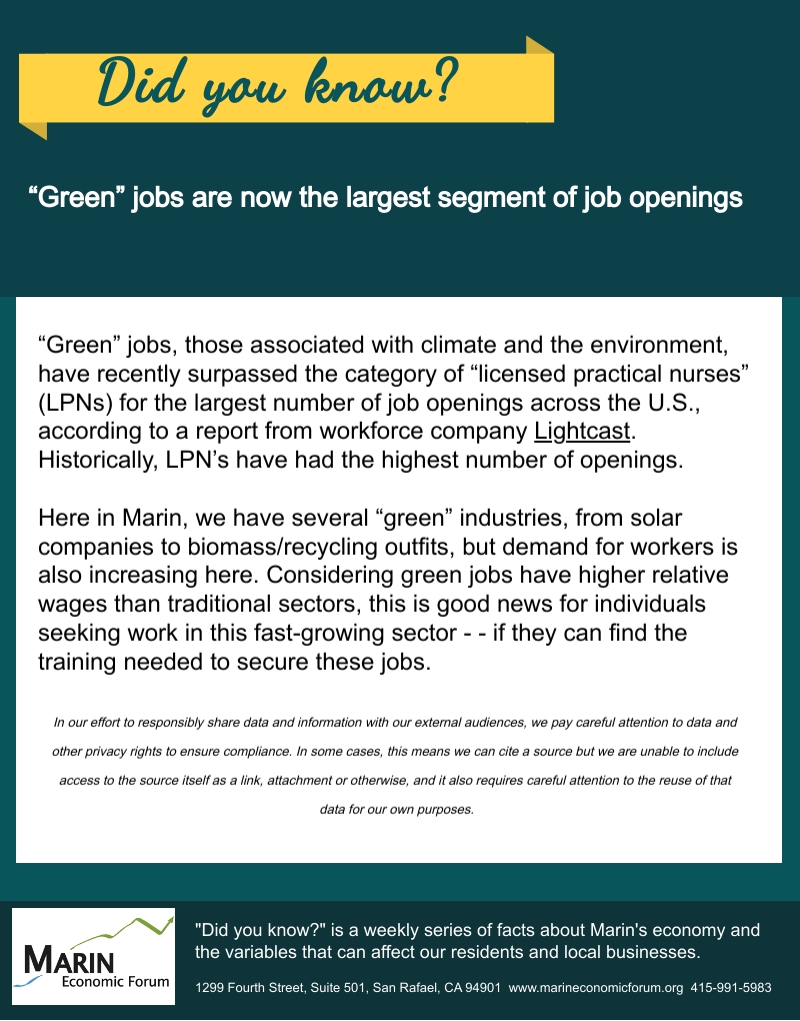
Be the first to receive updates and news from MEF by subscribing or liking us on our social media pages: Facebook, Twitter, and LinkedIn!